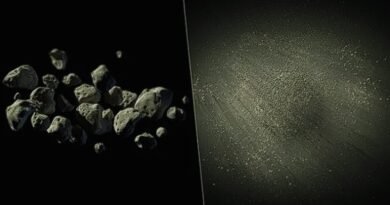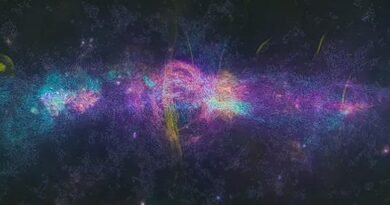CERN’s new 91km ‘Atom-Smasher’ on the Verge of Unveiling the Fate of the Universe

CERN’s new 91km ‘atom-smasher’ prepares to unveil insights into the ultimate destiny of our universe, promising profound revelations about its eventual end.
Plans for a cutting-edge subterranean ‘atom-smasher’ hold the promise of unlocking the mysteries surrounding the Higgs Boson and the essence of our Universe. Recently, authorities at CERN, the foremost hub for particle physics research globally, have taken strides towards the creation of what will be the world’s largest particle accelerator—a colossal machine designed to collide subatomic particles at velocities approaching the speed of light.
Proposed as the Future Circular Collider (FCC), this groundbreaking endeavor envisages a mammoth 91-kilometer structure, dwarfing its predecessor, the Large Hadron Collider (LHC), by a factor of three. With heightened precision and energy levels in particle collisions, the FCC heralds a new frontier in scientific exploration.
At its core, the FCC seeks to address pivotal cosmic enigmas, including the enigmatic imbalance between matter and antimatter, the elusive nature of dark matter and dark energy, the hypothetical existence of concealed dimensions, and the ultimate fate of our Universe. By delving into these fundamental questions, the FCC holds the potential to revolutionize our comprehension of the fundamental constituents of the cosmos.
Renowned science author Marcus Chown highlights the inadequacies of the current Standard Model of particle physics, advocating for a more comprehensive framework to tackle fundamental discrepancies. The FCC emerges as a potent tool in this quest, promising to unearth subtle clues that could pave the way for a deeper understanding of the universe’s underlying principles.
Subject to approval from the CERN Council, construction of this monumental collider could commence as early as the mid-2030s, with initial operations anticipated around 2045. With plans for research spanning well into the 2070s, the FCC represents a multi-generational commitment to scientific inquiry.
In the realm of particle accelerators, size equates to capability. The ability to achieve higher collision energies scales with the size of the accelerator. This premise, rooted in Einstein’s famous equation E=mc², underscores the imperative for larger accelerators to explore realms of higher energy and mass.
Prof. Andy Parker of Cambridge University underscores the significance of pursuing particles at higher energies, essential for probing uncharted territories of physics beyond current understanding. While the LHC has achieved notable collision energies, the FCC aims to surpass these levels, offering unprecedented opportunities for discovery.
The initial phase of FCC’s operation will prioritize enhancing the precision of particle measurements. This phase entails colliding electrons and positrons to produce copious quantities of the enigmatic Higgs boson, thus serving as a ‘Higgs factory’ for meticulous scrutiny of its properties.
The significance of the Higgs boson lies in its role as the carrier particle of the Higgs field, which endows other particles with mass. Contrary to conventional notions of matter possessing inherent mass, the Higgs mechanism posits that mass arises from interactions with the Higgs field.
Despite the landmark discovery of the Higgs boson, scientists grapple with understanding its intricacies and its relationship with other fundamental particles. The FCC aims to dissect the Higgs boson’s composition and interactions, potentially uncovering its composite nature akin to previously discovered particles.
The importance of the Higgs boson extends beyond elucidating the origins of mass, playing a pivotal role in shaping the evolution and fate of the Universe. As the Universe cooled following the Big Bang, the Higgs field is believed to have conferred mass upon particles, initiating a transformative phase in cosmic evolution.
The stability of the Universe itself hinges on the mass of the Higgs boson, influencing predictions regarding the Universe’s ultimate destiny. By scrutinizing the Higgs boson’s properties with unprecedented precision, the FCC aims to resolve fundamental questions surrounding the Universe’s long-term evolution.
In contemplating the fate of the Universe, Prof. Parker draws an analogy likening the Universe to a ball perched on a hill, poised between stability and instability. The exact mass of the Higgs boson determines whether the Universe resides in a stable state or teeters on the brink of a cataclysmic transition.
The FCC’s potential to unlock these cosmic mysteries underscores its pivotal role in advancing our understanding of the Universe’s origins, evolution, and ultimate fate. Through meticulous experimentation and analysis, scientists aspire to unravel the intricate tapestry of cosmic phenomena, shedding light on the profound mysteries that have captivated humanity for centuries.








